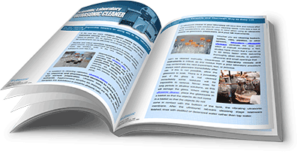Deionized Water Rinsing after Ultrasonic Cleaning
We’ll start this post by stating that it is not always necessary to rinse products after ultrasonic cleaning. Engine parts such as gears and carburetors are examples where cleaning solution residues may be tolerable. If not, then rinsing cleaned parts with fresh water should usually suffice. There are other areas, however, where thorough rinsing is essential and where deionized water rinsing after ultrasonic cleaning is strongly recommended.
These are applications where the slightest bit of remaining contaminants or cleaning solution residues can impact performance. Electronic components such as printed circuit boards, optics, and medical and surgical instruments, are examples. These are applications where spot-free drying is the goal, and in this context “spots” relate to dissolved minerals in regular water that remain as residues when the water evaporates.
Removing dissolved minerals in water is generally accomplished by two methods. Deionization is a process that produces deionized water (DI water) by passing the water through ion exchange resins. This process exchanges the negative and positive ions in the water for H+ and OH– ions which combine to form water. Deionization effectively removes ions but it does not remove most organic molecules and microorganisms. However, many commercial deionization processes include additional steps to remove such impurities. The other process is by distilling the water – that is evaporating it and collecting the condensate.
Ion-free water is, well, “unnatural” because it wants its ions back. In fact DI water can grab ions from virtually anywhere including corrosion-resistant stainless steel and from the surrounding air. This is why it is highly effective as a rinsing agent for PCBs, surgical implants and similar products after they are ultrasonically cleaned. DI water can be produced on site or can be ordered in bulk from suppliers, usually shipped in plastic containers that minimize ion absorption during storage. Plastic piping is generally used to transport DI water from the storage container to the rinsing station.
Distilled Water
Distilled water as noted above is produced by boiling water and collecting condensate. Distillation will remove nonvolatile materials including most but not all ionic materials. Volatile organic materials such as oils may distill over with the steam and remain in the water. Distillation requires a lot of energy and is therefore more expensive than deionization. For critical applications that require extremely high purity rinsing water, a multi-stage water purification process may be required.
We hope this brief tutorial is useful. Tovatech does not market DI or distilled water but our scientists are ready to help you decide on which (if any) rinsing process will deliver the best results in your ultrasonic cleaning operations.
